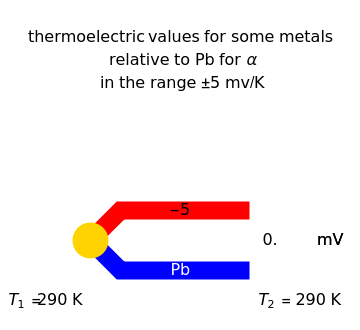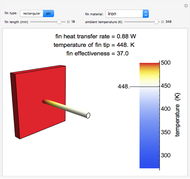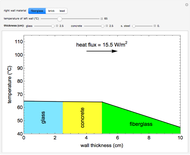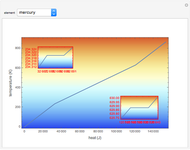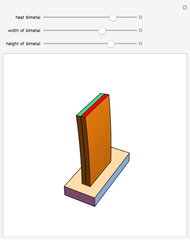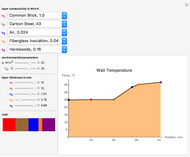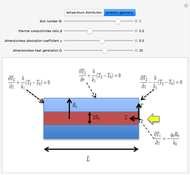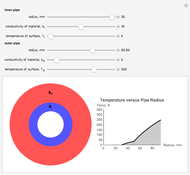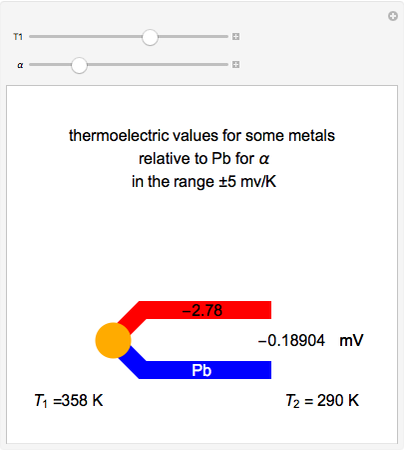Seebeck Effect in a Thermocouple

Requires a Wolfram Notebook System
Interact on desktop, mobile and cloud with the free Wolfram Player or other Wolfram Language products.
Thermoelectric phenomena include the relationship between thermal and electrical phenomena in metals and semiconductors. Included among these are the Seebeck, Peltier, and Thomson effects. In the Seebeck effect, a closed circuit consisting of dissimilar conductors produces an emf across contacts maintained at different temperatures. In the simplest case, when the electrical circuit is composed of two different conductors, the system is called a thermopile (or a thermocouple). The value of the thermoelectric power depends only on the temperatures  and
and  of the hot and cold contacts and on the composition of the conductors. For a small temperature range, thermoelectric power
of the hot and cold contacts and on the composition of the conductors. For a small temperature range, thermoelectric power  is approximately proportional to the temperature difference,
is approximately proportional to the temperature difference,  . The coefficient
. The coefficient  is called the Seebeck coefficient or thermoelectric power density. It depends on the conductor materials and the temperature range. Values are given for some coefficients with respect to Pb in the temperature range 0 to 100 °C.
is called the Seebeck coefficient or thermoelectric power density. It depends on the conductor materials and the temperature range. Values are given for some coefficients with respect to Pb in the temperature range 0 to 100 °C.
Contributed by: Andrew Tuzhykov (January 2014)
Open content licensed under CC BY-NC-SA
Snapshots
Details
detailSectionParagraphPermanent Citation
"Seebeck Effect in a Thermocouple"
http://demonstrations.wolfram.com/SeebeckEffectInAThermocouple/
Wolfram Demonstrations Project
Published: January 3 2014
